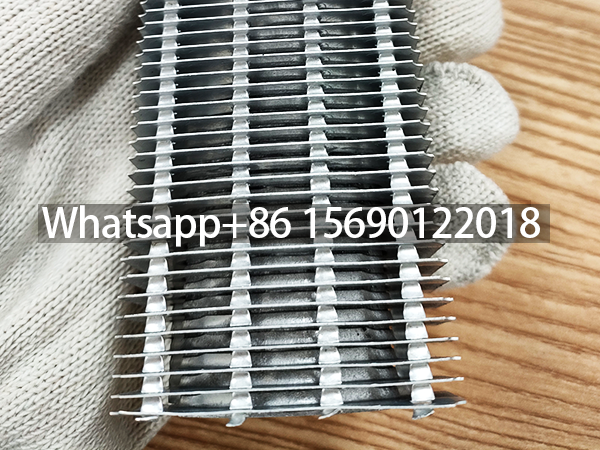Square and Rectangular Fins Manufacturer | Supplier and Exproter in China
Here is the professional of the comparison between Square Fins and Rectangular Fins on finned tubes:
Square fins and rectangular fins are two closely related designs in fin-tube radiators, with both similarities and differences in structure, performance and application.

Comparison: Square Fins vs. Rectangular Fins on Finned Tubes
Square and rectangular fins are two closely related designs in finned tube heat exchangers, sharing similarities while differing in structure, performance, and applications.
I. Structural & Design Features
-
Square Fins
- Geometry: Typically square plates with sharp right-angle edges, mounted on base tubes via processes like U-tube lacing or welding to form regular arrays.
- Key Advantages:
- High Mechanical Strength: Right-angle edges enhance interlocking with the base tube, outperforming curved fins in deformation resistance.
- Space Efficiency: Square layout enables compact arrangements with higher heat transfer area per unit volume.
- Common Sizes: Standardized dimensions (e.g., 25×50 mm, 40×80 mm) for mass production.
-
Rectangular Fins
- Geometry: Rectangular plates with flexible aspect ratios (non-square), featuring variants like corrugated or serrated edges.
- Key Advantages:
- Larger Heat Dissipation Area: ~10–15% greater effective surface area vs. same-size square fins.
- Fluid Flow Optimization: Corrugated/serrated edges disrupt airflow, enhancing local heat transfer coefficients.
Shared Traits: Both amplify heat transfer via expanded surface area and employ processes like high-frequency welding, brazing, or mechanical lacing for tube attachment.
II. Performance Comparison
| Parameter | Square Fins | Rectangular Fins |
|---|---|---|
| Heat Transfer Efficiency | Simple design, low cost; but flow dead zones form at corners | Larger dissipation area; corrugated/serrated edges boost turbulence |
| Flow Resistance | Sharp angles cause localized eddies → higher resistance | Edge optimization (e.g., corrugations) reduces resistance by 5–10% |
| Fouling Resistance | Particle buildup in corners → frequent cleaning | Corrugated surfaces resist fouling → longer maintenance cycles |
| Manufacturing Cost | Mature stamping/brazing processes → lower cost | Complex edge designs add 15–20% production cost |
III. Typical Applications
-
Square Fins Preferred:
- Industrial Ovens/Reactor Jackets: Withstand high temp/pressure via robust mechanical strength;
- Compact Heat Exchangers: Maximize volumetric efficiency in space-limited setups.
-
Rectangular Fins Advantageous:
- High-Thermal-Load Systems: Serrated/corrugated fins enhance local heat transfer (e.g., petrochemical reactors);
- Air Coolers: Extended rectangles improve gas-side efficiency; staggered layouts minimize dead zones.
IV. Selection Guidelines
-
Prioritize Square Fins When:
- Budget constraints demand mass production;
- High vibration/compressive strength is critical (e.g., steam systems).
-
Prioritize Rectangular Fins When:
- Ultra-high heat dissipation is required (e.g., data center cooling, high-power-density equipment);
- Low-dust gas media allow turbulence optimization via corrugations/serrations.
💎 Summary:
Square fins excel in cost efficiency and rigidity.
Rectangular fins dominate custom edge designs and maximized surface area for high-performance demands.
Final selection must balance cost, fluid properties, and thermal load intensity.

